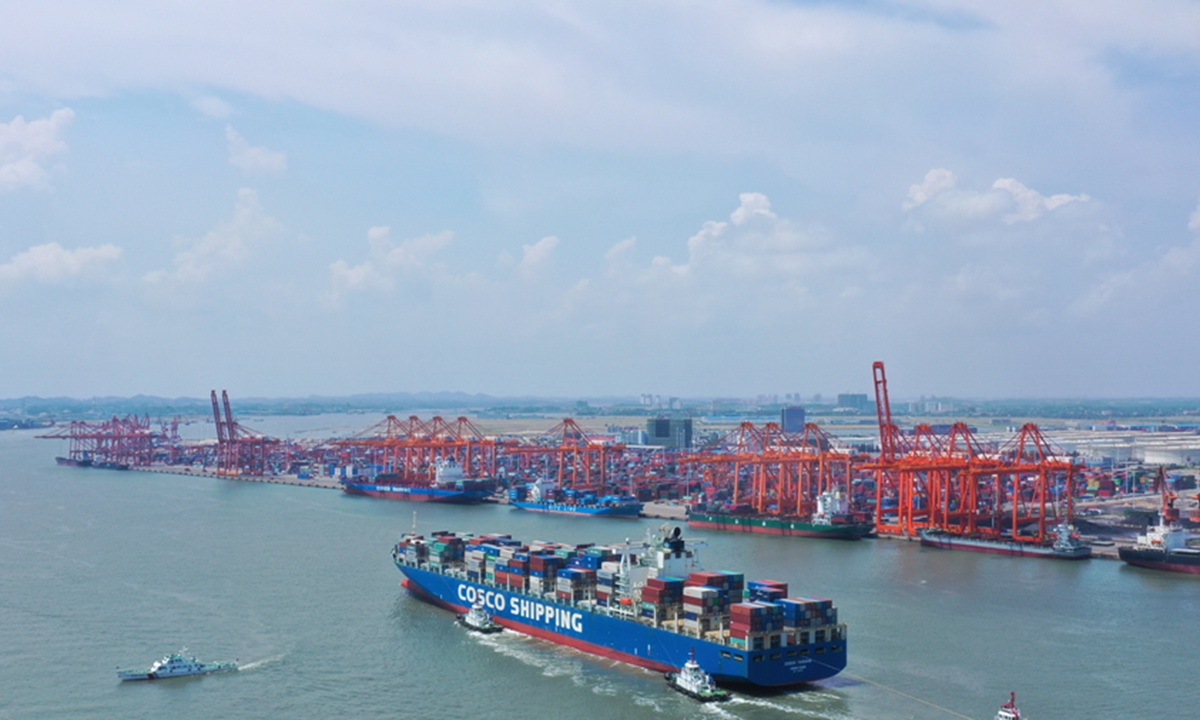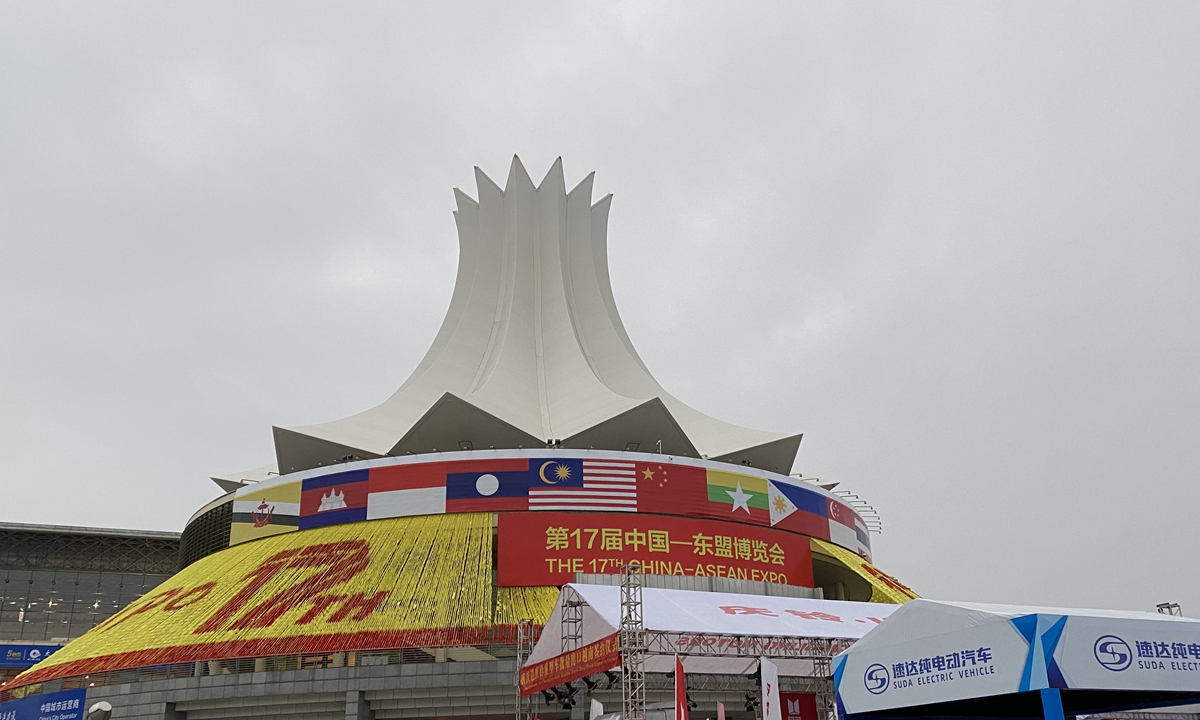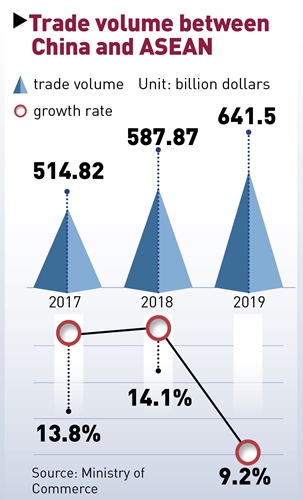Regional cooperation key for revival
By Zhang Dan in Nanning Source: Global Times Published: 2020/11/29 17:23:40
Southwest China reaps benefits from partnership with ASEAN

A 100,000-ton capacity shipping lane at the Qinzhou Port in South China's Guangxi Zhuang Autonomous Region is put into use on July 30. Photo: Courtesy of Guangxi Development and Reform Commission
Tropical fruit from Southeast Asian countries was rarely seen in China a decade ago, but now durian from Thailand and mangosteen from Malaysia are regular products for Chinese consumers. Meanwhile, Chinese smartphone brands used to be strange names to users in ASEAN countries, but are now popular choices there.
All of these changes have been established due to the increasingly warming relations between China and the ASEAN countries and the signing of the China-ASEAN Free Trade Agreement (FTA) in 2010 which has brought booming bilateral trade to the region.
With the recent inking of the Regional Comprehensive Economic Partnership (RCEP), further trade will be realized with the establishment of a business circle in the region that generates $18 trillion GDP, or roughly 16 percent of the global economy, helping the region to combat the COVID-19 pandemic together.
In particular, Southwest China, which borders countries in Southeast Asia, will reap substantial benefits from the ASEAN countries. Led by the core city of Nanning, South China's Guangxi Zhuang Autonomous Region, which holds the 17th China-ASEAN Expo from Friday to Monday, the cooperation between China and ASEAN countries will continue to see huge opportunities in the post-COVID era, with some experts saying that the closer bilateral cooperation will allow ASEAN and China to lead in economic recovery worldwide as the global economy is still emerging from the pandemic.
China, ASEAN trade booming

The 17th China-ASEAN Expo is held from Friday to Monday in Nanning, South China's Guangxi Zhuang Autonomous Region. Photo: Zhang Dan/GT
At the expo in Nanning, this Global Times reporter found crop reapers attracted great attention. A member of staff at Wanhoo Motor, a tricycle manufacturer, told the Global Times that the company is looking forward to selling its easy-to-use crop reapers to Southeast Asian countries as they are designed specifically to work on the roads and soils found in the region.
Wanhoo is not alone. In recent years, engines, asbestos and glass bottles from Southwest China are among popular export goods to Indonesia, the Philippines and Cambodia, which are becoming emerging economies boasting a cheap labor force.
But booming bilateral trade and the radiating effect of building strong regional partnerships is not one-way. Goods imported from Vietnam and Cambodia are shipped to Qinzhou Port East Station in Guangxi and then transported to Southwest China by rail. This makes the building of the China-ASEAN Multimodal Transport Alliance vital.
According to Guangxi Development and Reform Commission, the building of China's western land-sea freight route, part of the New International Land-Sea Trade Corridor has achieved outstanding breakthroughs as it is on the way to becoming a strategic channel to connect the Yangtze River Economic Zone, Chengdu-Chongqing economic circle and Hainan Free Trade port.
So far, six routes combining shipping and railway transport from Guangxi to Chongqing, Sichuan, Yunnan, Guizhou, Gansu and Shaanxi have all been put into use.
In the first 10 months, 3,655 shipments along western land-sea freight route were dispatched despite the coronavirus epidemic, up 113 percent year-on-year, official data showed.
Bigger role needed
Places like Yunnan and Guangxi in Southwest China greatly benefit from closer cooperation and partnership between China and ASEAN and should take more responsibility now, according to analysts.
"The level of export-oriented economy in these regions greatly increased after the China-ASEAN FTA was signed," Shen Minghui, secretary-general of the Center for APEC and East Asian Cooperation with the Chinese Academy of Social Sciences, told the Global Times, adding that people living along the borders heavily rely on mutual economic growth.
The similarities between the bordering provinces in China and Southeast Asia countries pull their relationship closer. Herds of electronic motorbikes, tropical fruit booths lining the streets and the energetic vibe of the young, hectic workers might make one question: am I in China or Southeast Asia?
Benefiting from the close cooperation with ASEAN countries, Southwest China is now seeking a bigger role in driving regional economic revival.
"As an international transport hub in Southwest China, Nanning has done a good job. It needs to better develop local competitive industries in order to become a leader in regional economic revival amid the pandemic," Shen said.
Meanwhile, the radiating effect of Southwest China will extend to Vietnam, Laos and Myanmar thanks to the mechanism of Lancang-Mekong Cooperation - a joint project for cooperation between the riparian states of Lancang River and Mekong River, contributing to their local economic development, according to Xu Liping, director of the Center for Southeast Asian Studies at the Chinese Academy of Social Sciences.
